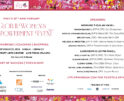
Want to Be More Emotionally Intelligent? Consider Mindfulness.
“I don’t know everything I need to know about my business!” Debra, an executive coaching client, said in a panicked voice. She was preparing for her first strategy presentation for the Board of Directors meeting the next day. Just three weeks in a new role as head of a division of her company, Debra was understandably nervous. This was the first time she was leading a division and she didn’t want to let down the CEO (her boss) who had promoted her.
Normally a person who loved to connect with people, she had spent much of the last two weeks behind closed doors prepping for the board meeting. She was torn between what she knew she must do (engage people, establish trust and learn the business through them), and what her fear of failure compelled her to do (become an instant expert on the business).
Sound familiar? Our fears and emotions are many times more powerful than our reasoning brain and cause us to make decisions that don’t’ serve us. This is where mindfulness (being aware of your thoughts in the present moment without judgment) can be an outstanding tool to help us make more emotionally intelligent decisions. In fact, I’m such a fan of mindfulness, I’ve even created a set of practices for you to explore.
One tool that my executive coaching clients find instrumental for making more emotionally intelligent decisions is a Mind Story Map. It helps us get more aware of how our (often unconscious) thoughts and beliefs can derail us. Our thoughts lead to certain emotions which lead to certain habitual behaviors which create outcomes that continue to reinforce the habitual pattern.
When we become aware of these thoughts and their impact, we can decide to make different choices with different outcomes. Self-awareness is a key foundation of emotional intelligence and the Mind Story Map helps us get more self-aware.

Thoughts: Debra became aware that her assumption about the board meeting was that she needed to be an expert and know the details of each of the businesses in her division.
Belief About Self: Her belief was that she wasn’t prepared and would let her boss down.
Belief About Others: Her belief was that Board members would judge her harshly for not being an expert and that her CEO would be disappointed in her.
Emotions: These thoughts and beliefs led to Debra feeling anxious, fearful and stressed out.
Behavior: She shut herself off in her office to fully prepare, writing detailed scripts for what she would say.
Outcomes: In the tool, the outcome is the impact of the behaviors. However, as Debra worked through the exercise, she realized that reading from a detailed script and trying to be the expert would hardly impress the board.
Working through this tool, Debra realized that her assumption about needing to be the expert was driving fear and anxiety. Of course, it would be hard to be an expert on the details of her business in just three weeks! As she saw this pattern, I asked her, “What could be possible if you didn’t believe these thoughts?” She immediately saw other ways of approaching her role in the board meeting. She realized that board members wouldn’t expect her to know the details. She decided she would reach out to her boss to understand different board members and to anticipate questions that may come up.
To her credit, Debra quickly saw how staying stuck in the assumption that she needed to be an expert would impact her relationships with her direct reports, and even prevent her from seeing all the other ways she could add value in her role.
What about you? When you notice difficult emotions arising, take a step back to become mindful of how your thoughts and beliefs are driving your outcomes. It will help you be a more emotionally intelligent leader.
By Henna Inman
Photo by Janko Ferlic
Henna Inam is the CEO of Transformational Leadership Inc. She is a top executive and team coach working with C-level executives in Fortune 500 companies. Her book Wired for Authenticity serves as a touchstone for leaders who seek both authenticity and agility in a 24/7 dynamic, fast-paced workplace.
Recommended
-
Getting What You Want At WorkDecember 20th, 2024
-
Fall 2024 EventNovember 19th, 2024
-
Pink ProgramOctober 20th, 2024
-
Influential LeadershipOctober 20th, 2024
-
REGISTER HERE FOR THE UPCOMING...September 19th, 2024















